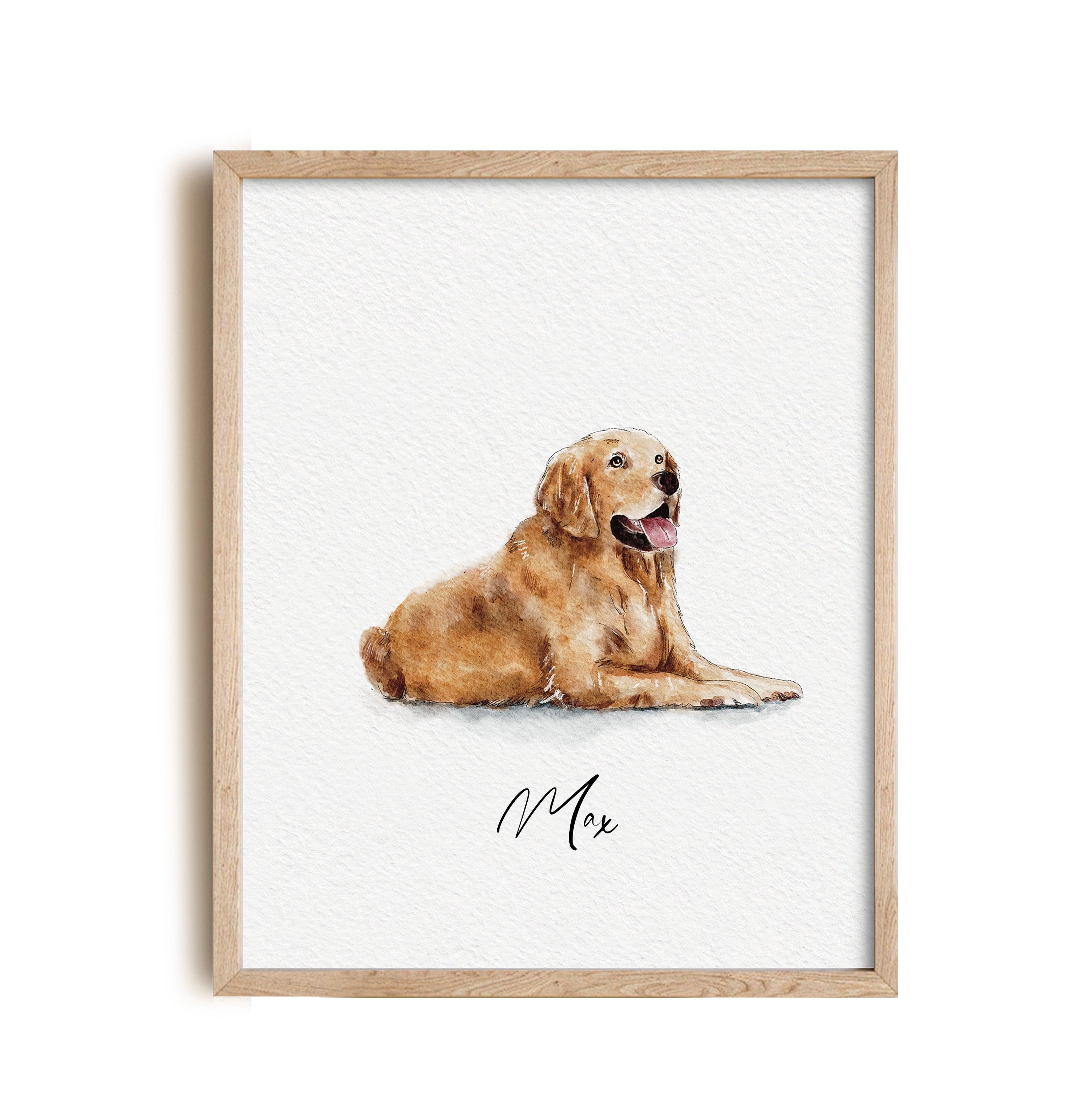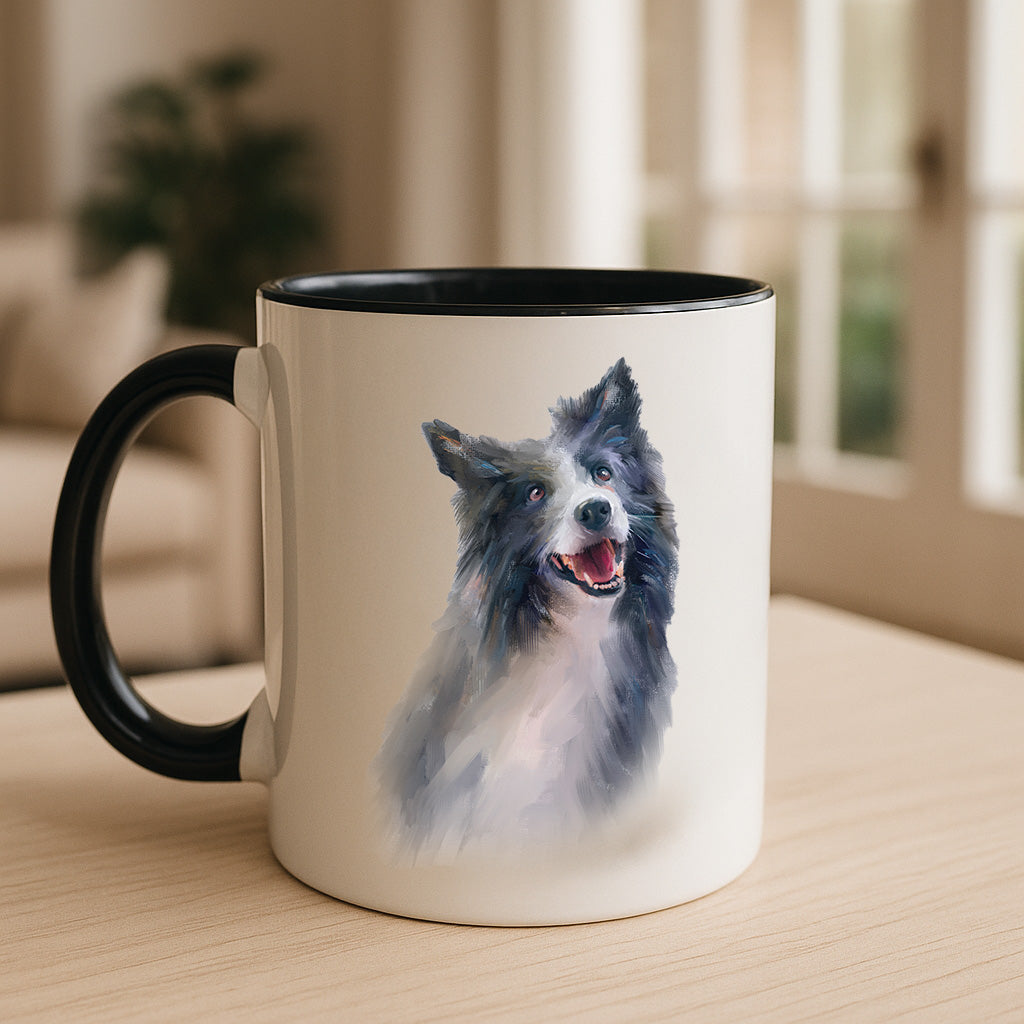
Capture Your Pet's Spirit: Watercolor Portrait of Dog Custom Art
Creating a Stunning Watercolor Portrait of Dog: A Step-by-Step Guide
Introduction to Portrait Painting

Watercolor pet portraits are a unique and creative way to capture your pet’s spirit and personality, bringing joy, happiness, and love into your home.
Investing in a special gift like a custom watercolor pet portrait is a valuable and meaningful way to celebrate your pet’s life and memory, making it a special surprise for any pet lover.
Our custom watercolor pet portraits are created from your favorite photos, using a combination of artistic skill and digital technology to create a one-of-a-kind piece of art. After placing an order, you can submit your pet photos to ensure a personalized and special final product.
Watercolor pet portrait artists use a range of techniques to create a beautiful and personalized portrait that captures the essence of your pet.
By choosing a custom watercolor pet portrait, you can create a stunning and unique piece of art that will be treasured for years to come.
Choosing the Right Materials and Tools
When creating a watercolor pet portrait, the materials and tools you choose can make a significant difference in the quality of your painting. Start with high-quality watercolor paper, as it forms the foundation of your artwork. Cold-pressed paper is often preferred by artists for its texture and durability, providing a good balance between smoothness and the ability to hold water and paint. A popular choice is 140lb or 300gsm paper, which is thick enough to withstand multiple layers of paint without warping.
Next, consider your watercolor paints. There are various brands and types available, including pan paints and tube paints. Choose a brand that suits your style and budget, keeping in mind that professional-grade paints often offer more vibrant and lasting colors. Brushes are another vital tool; having a range of brushes in different sizes and shapes will help you achieve the desired effects in your painting. A good set typically includes round brushes for detail work and flat brushes for washes and broader strokes.
Don’t forget the basics: a pencil and eraser for sketching your composition, a water container for rinsing brushes, and a palette for mixing colors. Additional tools like a spray bottle can help keep your paints moist, and masking fluid can be used to preserve white areas on your paper. By carefully selecting your materials and tools, you’ll be well-equipped to create a stunning watercolor pet portrait that captures the essence of your beloved pet.
Planning Your Portrait

To create a stunning watercolor pet portrait, start by selecting a clear and well-lit photo of your pet that captures their face, personality, and spirit.
Consider the size and style of the portrait, choosing from a range of options to suit your needs and preferences.
Think about the background and composition of the portrait, using your imagination to create a unique and personalized piece of art.
Choose a watercolor pet portrait artist who has experience in creating custom portraits that capture the essence of your pet. Don't hesitate to ask the artist specific questions about your pet's personality and quirks to ensure the final artwork truly reflects your pet's unique character.
Check the artist’s portfolio and reviews to ensure you are working with a skilled and talented professional.
Understanding Dog Anatomy for Better Portraits
To create a realistic and accurate watercolor pet portrait, it’s essential to have a good understanding of dog anatomy. This knowledge will help you capture the unique features and personality of your pet. Start by studying the bone structure, muscle tone, and proportions of dogs. Pay close attention to the shape and size of the head, ears, eyes, and mouth, as these are key features that define a dog’s appearance.
Different breeds have distinct characteristics, so consider the specific traits of your pet’s breed. For example, a Greyhound’s slender build and long legs differ significantly from a Bulldog’s stocky frame. Age and individual characteristics also play a role; a puppy’s features will differ from those of an older dog. Understanding these nuances will help you create a more personalized and lifelike portrait.
Observing dogs in real life, studying photographs, and consulting with veterinarians or animal experts can provide valuable insights into dog anatomy. This knowledge will not only improve the accuracy of your painting but also help you avoid common mistakes, such as incorrect proportions or poorly defined features. By mastering dog anatomy, you’ll be able to create a watercolor pet portrait that truly captures the spirit and personality of your pet, bringing joy and satisfaction to the pet owner.
Building the Portrait

The first step in building a watercolor pet portrait is to create a light pencil sketch, determining the pose and position of the subject. Use a Micron .01 pen to make a stronger drawing, preferring brown ink over black to add depth and detail to the portrait. Start with a light wash using a large brush and plenty of water, limiting the palette to the three primary colors to keep the painting fresh. Establish the position of the light source and think in terms of warm and cool areas, using your knowledge of color theory to create a harmonious and balanced portrait. Use cold-pressed watercolor paper as the surface for your pet portrait, choosing a high-quality paper that will withstand multiple layers of paint. Embrace spontaneity and don't fear making a mistake, as drips and splatters can add character to your artwork.
Color Theory and Palette Selection for Pet Portraits
Color theory and palette selection are critical elements in creating a beautiful and effective watercolor pet portrait. The colors and tones you choose can significantly impact the overall mood and atmosphere of your painting. Start by considering the personality and spirit of your dog. Warm colors like reds, oranges, and yellows can convey energy and warmth, while cool colors like blues and greens can create a sense of calm and tranquility.
A limited palette can be effective in creating a cohesive and harmonious portrait, while a broader palette can add depth and interest. Experiment with different color combinations to find the one that best captures your pet’s unique character. The use of warm and cool colors can also help create a sense of depth and dimension, drawing the viewer’s eye to specific features or areas of the dog.
Think about the emotional impact of different colors and choose a palette that evokes the desired response in the viewer. For example, soft pastels can create a gentle and loving feel, while bold, vibrant colors can convey a sense of playfulness and energy. By selecting a thoughtful and well-considered palette, you can create a watercolor pet portrait that is not only beautiful but also meaningful and engaging.
Artists can seek inspiration from nature, art, and other sources to find the perfect palette for their watercolor pet portrait. By understanding and applying color theory, you’ll be able to create a painting that captures the unique personality and character of your pet, making it a cherished piece of art for years to come.
Adding Details and Texture to a Watercolor Pet Portrait
-
To add details and texture to a watercolor pet portrait, use a small brush to develop the features of the pet, especially the eyes.
-
Establish the iris first and carefully add the pupils to avoid a mushy dark mess, using a range of colors to create a realistic and lifelike effect.
-
Change the gaze from the reference photo to make the pet appear to be looking directly at the viewer, creating a sense of connection and intimacy.
-
Use a larger brush to add mid-tone values throughout the painting, creating depth and interest and pushing color choices to create a cohesive and harmonious portrait.
-
Experiment with negative painting and nonlocal color to add interest and depth, using your imagination and creativity to bring the portrait to life.
Creating Custom Pet Portraits

To create a custom pet portrait, start by uploading your favorite photo of your pet to the artist’s website or emailing it directly.
Choose from a variety of frame options to display your portrait, selecting a frame that complements the style and colors of the painting. Consider promoting the portrait as a unique item, perfect for thoughtful gifting.
Consider adding a digital file to your purchase, allowing you to share the portrait with friends and family or use it as a social media profile picture.
Receive a confirmation email after checking out, and reply to the email with your photos and any special instructions or requests. Research the market to determine what to charge based on existing price ranges and the quality of work available, which helps set your prices confidently.
Work with the artist to create a unique and personalized portrait that captures the essence and personality of your pet.
Finishing Touches for a Beautiful Pet Portrait
-
The final step in creating a beautiful pet portrait is to add the finishing touches, focusing on the darks in the eyes and adjusting the highlight if necessary. Clear communication about the turnaround time is essential, especially if the artwork is needed by a specific date.
-
Use Chinese white to add a touch of brightness and sparkle to the portrait, creating a sense of life and energy. This year marks a significant milestone in our journey, reflecting our decade-long experience in creating cherished pet portraits.
-
Save the whites for the beginning of the painting to avoid mistakes, using a range of techniques to create a beautiful and realistic effect.
-
Check the portrait for any errors or areas that need improvement, making any final adjustments before considering the portrait complete.
-
Sign the portrait and add any final details, such as a personalized message or the pet’s name, to create a unique and special piece of art that will be treasured for years to come.

